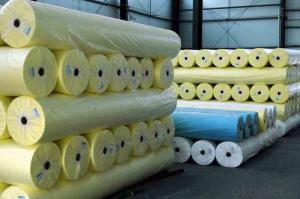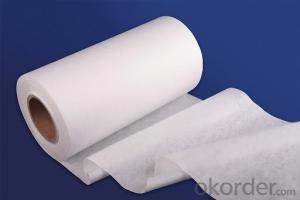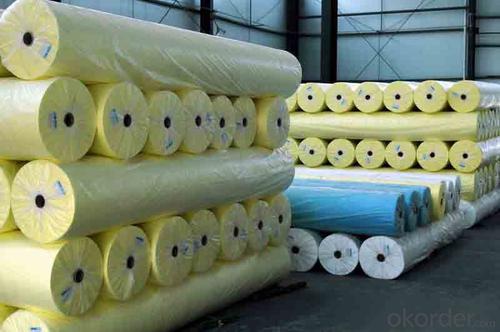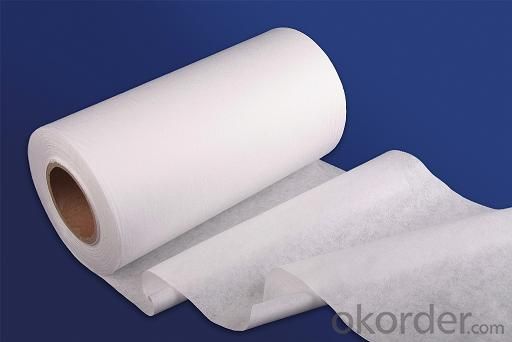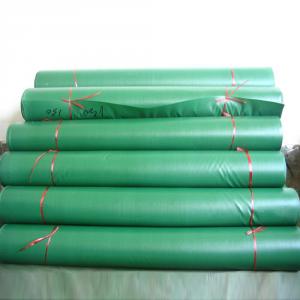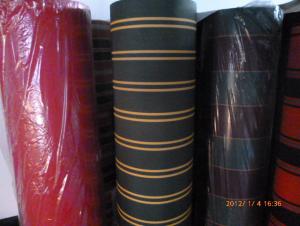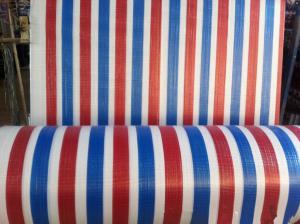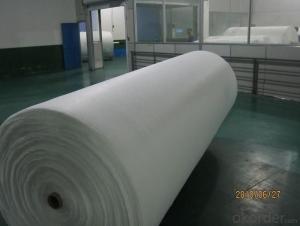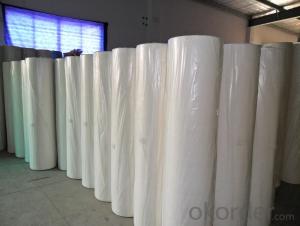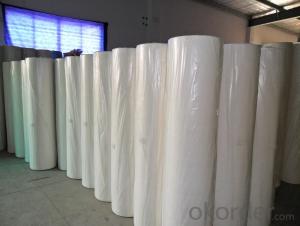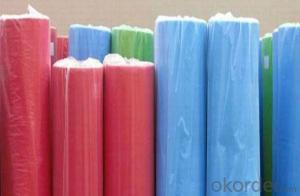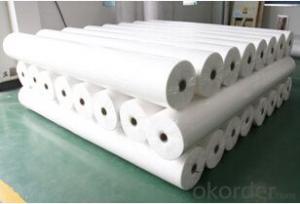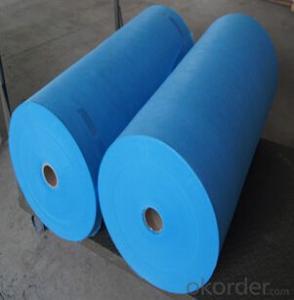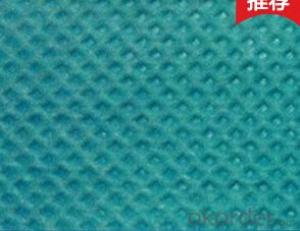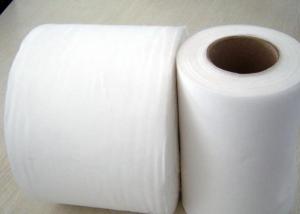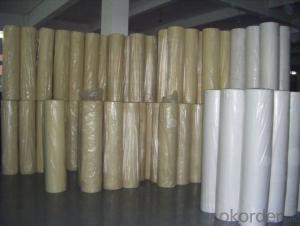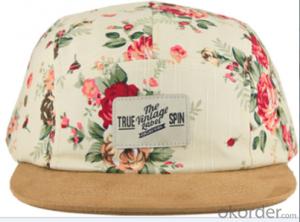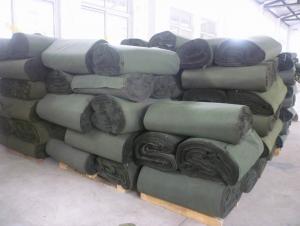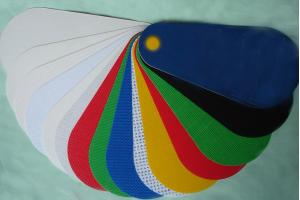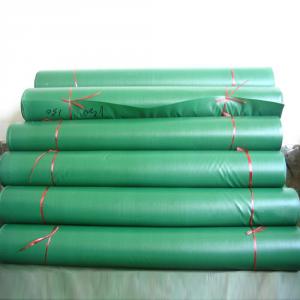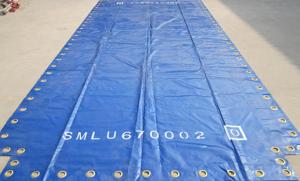PP non woven fabrics in different sizes various colors
- Loading Port:
- Shanghai
- Payment Terms:
- TT OR LC
- Min Order Qty:
- 1000 kg
- Supply Capability:
- 10000 kg/month
OKorder Service Pledge
OKorder Financial Service
You Might Also Like
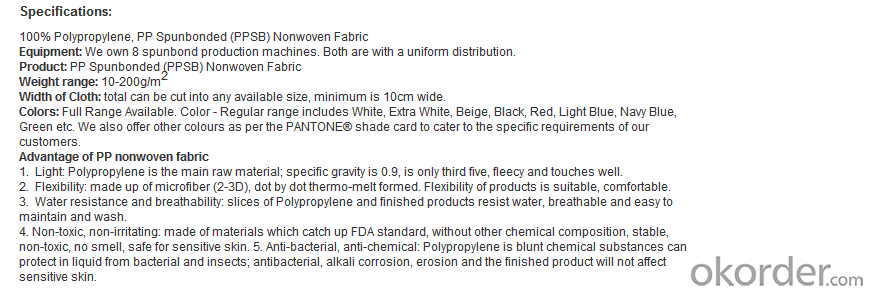
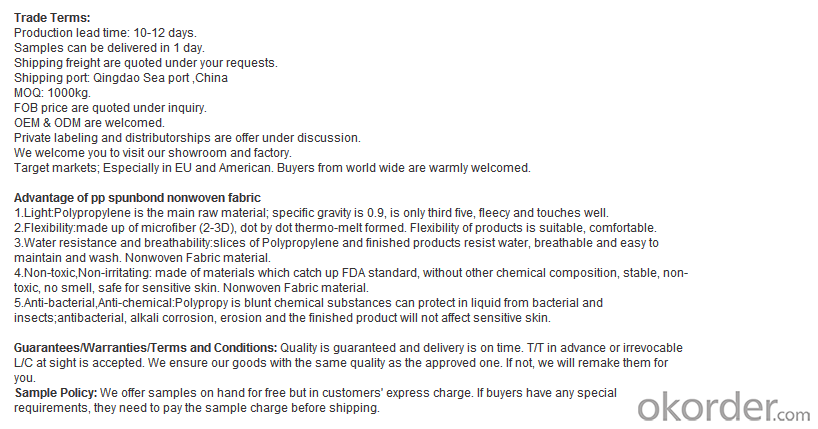
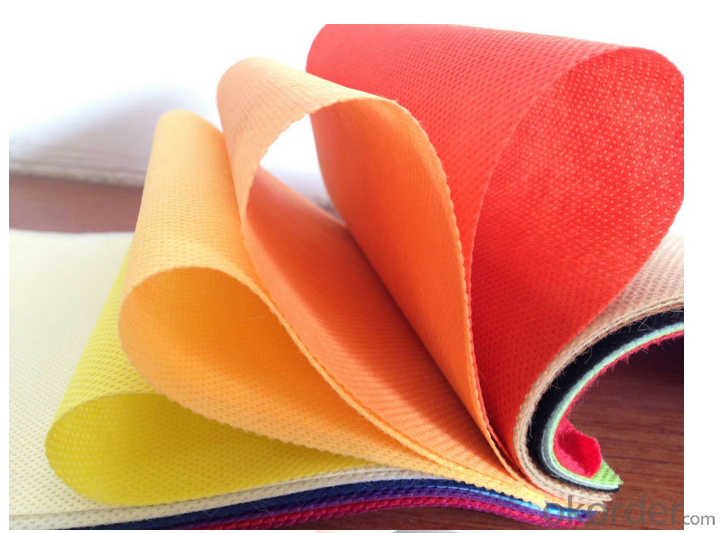
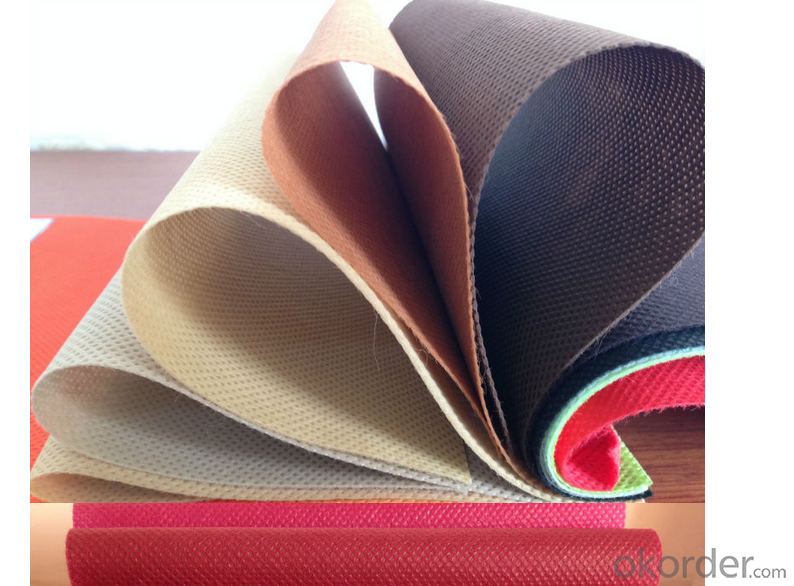
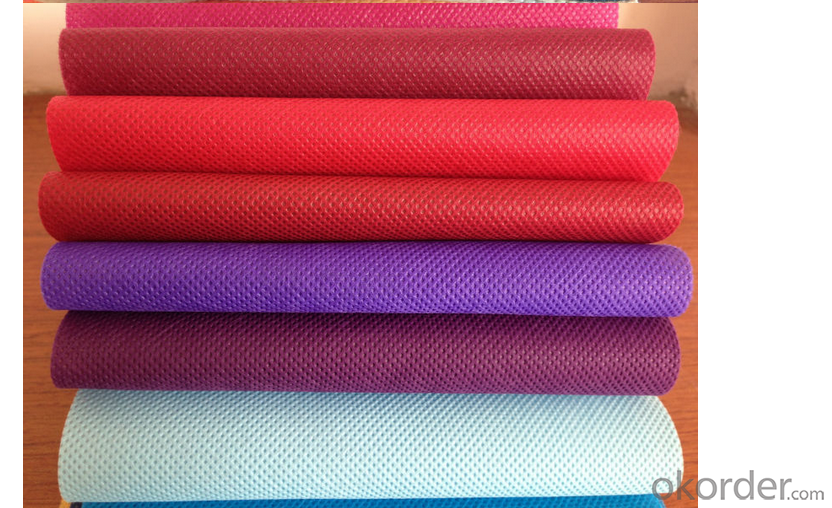
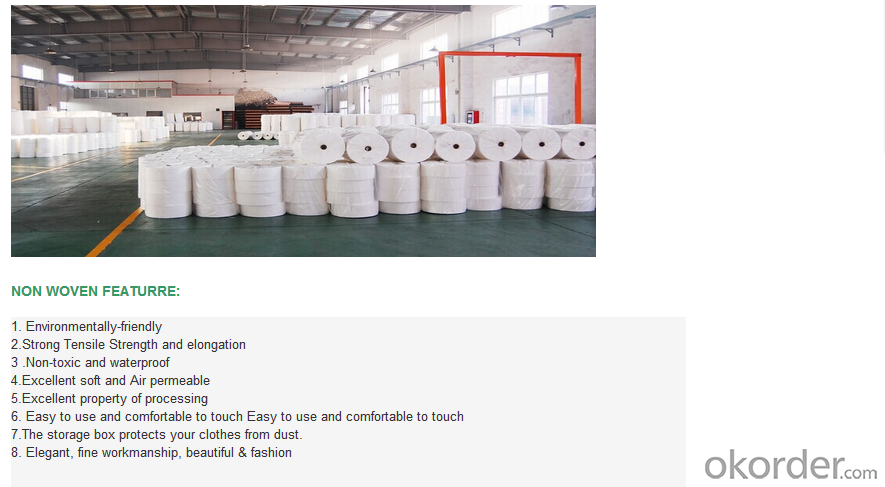
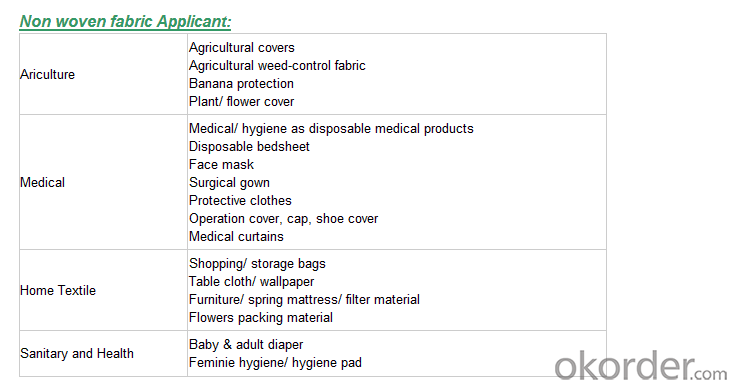
We are recognized as a reliable Manufacturer, Exporter and Supplier of Non Woven Fabric. We can provide Non Woven Fabric in any gram/m2 and any colour required by customer. Non Woven Fabrics are broadly defined as sheet or web structures bonded together by entangling fiber or filaments (and by perforating films) mechanically, thermally or chemically. PP Spun bonded Non woven Fabrics are produced using a precise extrusion-based technology. The polymer is stretched into a continuous filament and loosely spread onto a conveyor belt to form the web. Air is used to form and lay the fabric filaments. On the other hand, some non woven fabrics can be recycled after use, given the proper treatment and facilities.
Product Specifications
Weight: 10 - 150 gsm
Width: Max 1600 mm (can be slit)
Fabric Roll Length: As per buyer’s need ( 200 - 1200 Mtr)
Color: various colors available.
Procedure of production: Spun bonded Non Woven, Diamond design
Material: polypropylene
Minimum Order: 1000 Kg
Sample: sample free, freight collect
Product Application
Non woven fabric manufacturers usually manufacture the fabric in a roll form. It is then sent to various other industries where it has end applications, where is it cut and given different form depending upon the use. They can also be used in combination with different materials and offer a wide range of products.
Colored Non woven fabrics are use in many sectors and variety of applications, such as Health, Hygiene, Medical, Packaging, Agriculture, Furniture Upholstery, Geo Textiles, Leather Industry, Shoes and Garments. Customers come from the textile and automotive industries as well as many other sectors.
- Q: The problem of anti - splashing of textile fabrics
- As for the pu hard to say the best general now coated plants are pa more Tu Tektronix should be able to solve your coating problems
- Q: What is the meaning of TOP in the textile industry?
- TOP DYE generally refers to the Ma lin yarn, looked here like not. Look at your yarn count is filament.
- Q: Textile raw materials of mineral fiber
- The preparation of chemical fibers, usually the first natural or synthetic polymer or inorganic materials made of spinning melt or solution, and then filtered, measured by the spinneret (plate) out into a liquid stream, then Solidified into fibers. At this time the fiber is called the primary fiber, its mechanical properties are poor, must go through a series of post-processing processes to meet the textile processing and use requirements.
- Q: How to detect formaldehyde content of textiles?
- Textiles in the production process to go through pre-treatment, printing and dyeing, finishing and other multi-channel processing procedures, resulting in the presence of residual formaldehyde in textiles.
- Q: What is the number of raw materials for textile enterprises?
- Generally based on the variety of cloth, cloth type, speed and other parameters, in order to determine the sizing rate, slurry type
- Q: What are the policy measures developed by the Bangladeshi government for their exports?
- As the country's textile has a long history, coupled with the government's rational and orderly development strategy of the textile industry, Bangladesh is increasingly becoming a textile country in Asia. The textile industry is one of the major manufacturing industries in Meng.
- Q: Textile enterprises to operate the project: processing and production are different?
- And production from the beginning of raw materials, such as from the thread to the weaving, made of cloth and then made into clothes.
- Q: DTY FDY POY What are the textile raw materials?
- POY: pre-oriented wire, full name: PRE-ORIENTED YARN or PARTIALLY ORIENTED YARN. Refers to an incomplete stretch of synthetic filaments obtained between high-speed and non-oriented and drawn yarns obtained by high-speed spinning. Compared with the undrawn yarn, it has a certain degree of orientation, good stability, often used as tensile false twisted yarn (DTY) of the special wire. (Generally not used for weaving)
- Q: Why can the oil industry be used as raw materials for the textile industry?
- Textile raw materials is taken from the general terms of spinning and weaving, but with the textile knowledge system and the continuous development and improvement of the discipline system, especially non-woven textile materials and three-dimensional composite weaving and other technologies, the textile is now not only traditional Hand-spinning and weaving, including non-woven technology, modern three-dimensional weaving technology, modern electrostatic nano-network technology, so modern textile is a fiber or fiber aggregate multi-scale structure processing technology [1-2 ]
- Q: What is the use of polyurethane TPU hot melt adhesives in textiles?
- To tie on behalf of sewing can greatly reduce the labor intensity of clothing, and the production of fine clothing, fit, strong and solid. Hot melt adhesives used for fabric paste mainly polyamide, polyurethanes and polyurethane and the like.
Send your message to us
PP non woven fabrics in different sizes various colors
- Loading Port:
- Shanghai
- Payment Terms:
- TT OR LC
- Min Order Qty:
- 1000 kg
- Supply Capability:
- 10000 kg/month
OKorder Service Pledge
OKorder Financial Service
Similar products
Hot products
Hot Searches
